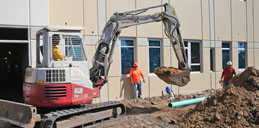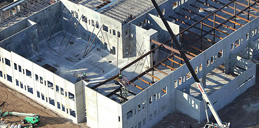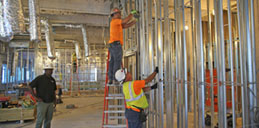Zero-Net-Energy Benefits in Commercial Construction
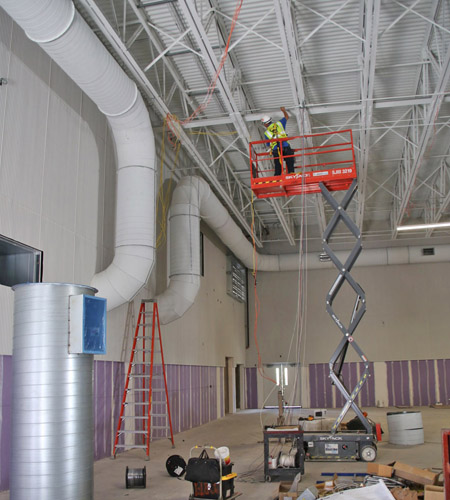 The trend towards increasing energy efficiency in commercial buildings has resulted in a substantial reduction of carbon emissions, a major contributor of air pollution cities nationwide. And at the end of 2015, over 25,000 commercial buildings certified as EnergyStar compliant eliminated 17 metric tons of greenhouse gases which is equivalent to providing enough energy to power 2.3 million homes, according to the U.S. Environmental Protection Agency (EPA).
The trend towards increasing energy efficiency in commercial buildings has resulted in a substantial reduction of carbon emissions, a major contributor of air pollution cities nationwide. And at the end of 2015, over 25,000 commercial buildings certified as EnergyStar compliant eliminated 17 metric tons of greenhouse gases which is equivalent to providing enough energy to power 2.3 million homes, according to the U.S. Environmental Protection Agency (EPA).
What is zero-net energy
But now commercial building owners are being tasked to take energy efficiency to greater heights with the introduction of the zero-net initiative. The zero-net energy (ZNE) building initiative, also referred to as net zero energy, requires the total energy consumption of a building to be offset by the level of renewable energy produced by the building, on an annualized basis. Thus, neutralizing energy consumption.
With the success of the EnergyStar, LEED and similar energy efficient construction models that have eliminated so much greenhouse gases from the environment, some are wondering if zero net building is really necessary. There are several reasons. First, the number of commercial buildings and floor space is increasing. Data from the U.S. Energy Information Administration (EIA) shows that during the nine-year period between 2003-12, the number of commercial buildings and floor space increased 14% and 22%, respectively. This contributed to an additional increase of 7% in energy consumption. Second, with new technology and lighter building materials, we have the capability to build energy efficient commercial buildings cost-effectively without consuming additional energy.
The construction of a zero net building is a simple two-phase process:
The first phase is the energy-efficiency construction phase which incorporates the use of energy efficient materials, systems and appliances that are designed to minimize the carbon footprint of the building. The building owner may decide to seek EnergyStar or LEED certification to ensure the building is compliant with national or international energy efficiency standards.
The second phase of the ZNE process incorporates onsite renewable energy generation. This would include the use of wind, solar and hydro energy systems, or a combination. The amount of renewable energy generated would need to be sufficient to offset the level of energy that the building consumes.
Zero net energy building benefits
There are a number of zero net energy building benefits for employees, building occupants and the community. Buildings that are designed with ZNE in mind from the ground-up minimize indoor and outdoor pollution promoting a healthier environment for employees, occupants and the community.
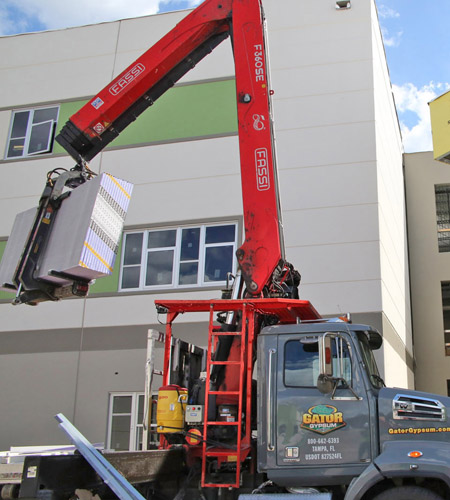 There are also substantial savings in energy costs and associated maintenance costs for HVAC systems as these systems work smarter, not harder.
There are also substantial savings in energy costs and associated maintenance costs for HVAC systems as these systems work smarter, not harder.
We often look at energy savings coming from electricity usage. And while most energy is consumed in the form of electricity; commercial buildings use plenty of water. Increasing water conservation and reducing consumption is also a goal of a ZNE building.
The future of ZNE buildings
Currently, there are more than 200 zero net energy buildings around the country. And while over 90% of ZNE buildings are in California, the number of ZNE buildings in Oregon, Arizona, Colorado and Florida are growing. The number of ZNE buildings increased by more than 70% in 2015, according to the National Building Institute (NBI).
Nationwide retailer Walgreens is building the first net zero retail store in the nation in Evanston, IL. The store is projected to consume approximately 200,000 KwH electricity each year. It will offset the consumption by generating over 256,000 KwH electricity through a combination of wind and solar energy.



